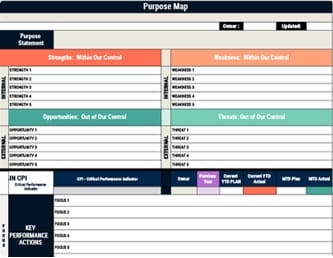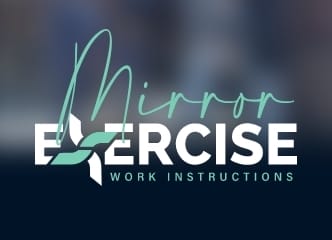When a product launch stalls because no one owns risk mitigation, you see why accountability matters: you need clear expectations, named owners, and regular check-ins that surface issues before they escalate. You’ll set SMART goals and OKRs for alignment, use RACI or DRI to assign decisions, and build feedback loops that reinforce responsible behavior. With structured communication routines and flexibility to adapt, you create initiative and trust, but the pitfalls—and how to avoid them—may surprise you.
Key Takeaways
- Define accountability, responsibility, and ownership, and use a DRI model to clarify expectations and reduce overlap.
- Set SMART goals and OKRs, documenting and sharing them to align outcomes and make progress visible.
- Establish structured communication routines and frequent check-ins to surface risks, remove blockers, and maintain transparency.
- Give regular feedback and recognition, using retrospectives to compare outcomes, learn, and reinforce accountable behaviors.
- Stay flexible by adjusting plans as conditions change, preserving momentum while holding clear commitments and standards.
Defining Accountability, Responsibility, and Ownership
Although these terms are often used interchangeably, you should distinguish accountability, responsibility, and ownership because each shapes behavior and results in different ways.
Start with Accountability: you set expectations that you’ll answer for actions, behaviors, performance, and decisions, creating a Culture where standards are explicit and consequences are understood.
Set clear expectations for accountability—own actions and decisions so standards and consequences are unmistakable.
Responsibility means you accept and manage the outcomes of assigned tasks and roles, coordinating with your Team so work flows efficiently and Members know who does what.
Ownership goes further; you take initiative, anticipate risks, and invest in the project’s success, even beyond your lane.
Use the Directly Responsible Individual model to make expectations Clear, reduce overlap, and surface gaps quickly.
Combining these practices builds a High-performing team grounded in clarity, initiative, and trust.
Why Accountability Drives Performance and Engagement
With clear definitions of accountability, responsibility, and ownership in place, you can now use accountability as the engine that turns clarity into performance and engagement.
When you set clear expectations and link outcomes to commitments, team members develop a sense of ownership, which raises commitment and measurable performance.
Research shows a strong culture of accountability delivers 50% higher employee engagement and a 23% lift in overall team performance, while teams lacking it are 18% less productive.
- Define outcomes and measures so accountability reduces ambiguity, aligns work, and speeds decisions.
- Connect individual actions to team success, strengthening commitment and a culture of ownership.
- Track progress visibly, reinforcing reliability and building high-performing habits across teams.
- Celebrate accountable behaviors, increasing morale and boosting collaborative problem-solving by 30%.
Core Pillars: Clarity, Commitment, Communication, Check-Ins, Flexibility
Blueprints matter: an effective accountability framework rests on five core pillars—clarity, commitment, communication, check-ins, and flexibility—that work together to turn intentions into reliable execution.
Start with clarity by defining explicit objectives and responsibilities, so everyone understands the work, the boundaries, and the expected results, which reduces confusion and speeds decisions.
Define explicit objectives and responsibilities to reduce confusion, speed decisions, and align expectations.
Build commitment by securing mutual agreements on outcomes and behaviors, because shared investment strengthens ownership and psychological safety, encouraging proactive effort.
Establish structured communication through routines and updates that surface risks early, align priorities, and maintain transparency, reinforcing accountability.
Schedule ongoing check-ins to review progress, remove blockers, and deliver timely feedback, enabling continuous course correction.
Finally, use flexibility to adjust plans and processes as conditions change, preserving momentum while keeping accountability practices effective.
Setting Expectations With SMART Goals and OKRS
When you translate intentions into concrete targets, SMART goals and OKRs give you the structure to set clear expectations and hold people to meaningful results. You define what matters, align it to strategy, and use measurable key results to track progress, which strengthens an accountability culture and boosts team performance.
- Write SMART goals that are specific, measurable, achievable, relevant, and time-bound, so you set clear expectations and make assessment straightforward.
- Define OKRs by pairing ambitious objectives with measurable key results, ensuring each person sees how their work supports outcomes.
- Document and share goals and OKRs across teams, improving transparency, trust, and ownership and accountability.
- Review progress in regular check-ins, adjust priorities as evidence changes, and celebrate incremental wins, reinforcing a culture of accountability that research shows can lift team performance by up to 25%.
Assigning Ownership With RACI and DRIS
Clear goals only work if everyone knows who owns what, so turn your SMART goals and OKRs into action by assigning explicit roles using RACI and DRIs.
Use a RACI matrix to map responsibilities: Responsible does the work, Accountable owns the outcome, Consulted provides input, and Informed stays updated. Then name a Directly Responsible Individual for each task, creating a single point of accountability that reduces ambiguity and accelerates decisions.
Translate project deliverables into clear roles, document them visibly, and walk the team through how handoffs and decisions occur.
Review the RACI regularly as scope or staffing changes to keep responsibilities accurate. Integrate RACI and DRI basics into onboarding so new hires adopt an accountability culture early, which strengthens ownership, improves communication, and boosts team performance.
Feedback, Recognition, and Retrospectives That Reinforce Accountability
Although goals and owners set the stage, accountability sticks only if you operationalize it through steady feedback, meaningful recognition, and disciplined retrospectives that close the learning loop.
You give people a clear picture of where they stand, celebrate accountable actions, and turn outcomes into learning that improves future work. Build these practices into onboarding so every employee commits from day one, then sustain them with daily stand-ups and periodic reviews.
- Run regular feedback sessions that compare outcomes to expectations, surface blockers early, and align next steps so performance improves predictably.
- Use recognition, both public and rewards-based, to reinforce behaviors that demonstrate ownership and quality outcomes.
- Hold structured retrospectives to analyze wins and misses, capture insights, and assign improvements.
- Document agreements, revisit them, and track follow-through to strengthen accountability.
Avoiding Common Pitfalls and Building Proactive Communication Routines
How do accountable teams avoid the traps that quietly derail execution while building habits that keep everyone aligned and informed?
Start by making expectations clear and measurable, then document goals and roles so people know what success looks like and how to take ownership. Establish regular check-ins, use project tools for visibility, and provide concise updates that track progress and surface risks early.
Create a culture where teammates share concerns without fear, normalize asking for help, and replace blame with problem-solving dialogue that identifies root causes and next steps.
Practice proactive communication by soliciting input before decisions, clarifying dependencies, and confirming commitments in writing to embed accountability.
When Holding People Accountable, focus on agreements and outcomes, not personalities, and close every loop with next actions, owners, and timelines.
Frequently Asked Questions
How to Build a Culture of Ownership and Accountability?
Build a culture of ownership and accountability by setting clear expectations and measurable goals, using SMART or OKRs so everyone knows targets and success criteria.
Schedule regular check-ins and structured updates to align priorities, surface risks, and adjust plans.
Clarify roles with a RACI matrix to reduce ambiguity.
Recognize accountable behaviors and celebrate milestones.
Treat setbacks as learning opportunities, encourage open dialogue, and normalize asking for help, reinforcing continuous improvement and shared responsibility.
What Are the 5 C’s of Accountability?
The 5 C’s of accountability are clarity, commitment, communication, collaboration, and consequences.
You define clear roles and results so no one guesses expectations, then you secure commitment by aligning work with shared goals.
You maintain structured communication to surface risks early and track progress.
You build collaboration so peers support, share, and learn together.
Finally, you apply fair consequences—recognizing wins, correcting misses, and adjusting processes—to reinforce standards and sustain performance.
What Are the 4 P’s of Accountability?
The 4 P’s of accountability are Purpose, People, Process, and Performance.
You define Purpose to set clear goals and explain why the work matters.
You align People by building mutual commitment, ownership, and psychological safety.
You design Process with structured communication, checkpoints, and adjustments to stay on track.
You manage Performance by using actionable metrics, frequent reviews, and constructive feedback, ensuring progress, learning, and continuous improvement across the team.
What Are the 3 C’s of Accountability?
The 3 C’s of accountability are Clarity, Commitment, and Communication—so obvious it could light up a stadium.
You define clear expectations and roles, so everyone knows what “done” looks like. You secure commitment, aligning personal effort with shared goals, which builds ownership and psychological safety.
You maintain structured, ongoing communication—check-ins, feedback, and progress reviews—to surface issues early, adjust plans, and stay aligned.
Together, they drive results and strengthen morale through transparency and consistency.
Conclusion
You’ll build a durable culture of ownership by setting clear goals, assigning explicit roles, and reinforcing progress through frequent, focused check-ins. Use SMART goals and OKRs for clarity, RACI or DRIs for ownership, and short retrospectives to convert feedback into action. One useful statistic: teams that set specific, challenging goals increase performance by about 20–25%, because alignment reduces wasted effort. Keep communication predictable, document decisions, and adjust plans quickly, so accountability remains practical, fair, and results-driven.



